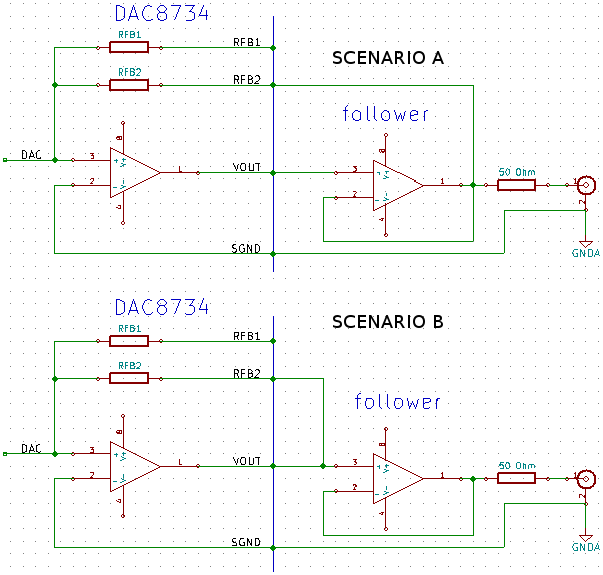Hello,
I am thinking about a unity gain buffer that can drive a 100 Ohm load from the output(s) of the DAC8734. There was a similar discussion going on about a year ago: "Buffer amplifier for DAC8734EVM".
The DAC8734 has got in-built feedback resistors RFB1-x and RFB2-x.
I wonder what would others say about the following two scenarios:
A) use the internal feedback resistor(s) as a common feedback for both amplifier stages (internal + high-current output external)
B) use the internal feedback resistor(s) for the internal amplifier only, followed by a unity gain high-current output external amplifier with its own feedback.
My gut feeling is that A) might give more accurate voltage output. B) might be more stable/reliable.
What do the experienced members think? Has anybody tried either of these scenarios successfully?
Cheers, Jakub


